
Royal Olympic Cruises' Sophistaced New Olympia Explorer (with photos)
Royal Olympic Cruises' sophisticated new Olympia Explorer uses speed and size to offer adventure and enlightenment. Second ship in series of fastest cruise vessels in the world offers unique combination of high speed and elegant amenities
Royal Olympic Cruise Lines has unveiled the 836-passenger Olympia Explorer, the company's second new ship in a series of the fastest cruise vessels of their size in the world. Olympia Explorer sets sail on May 3, 2002, to begin a summer series of exotic, seven-day "Grand Mediterranean" sailings to nine ports of call in Greece (Athens, Corfu, Katakolon/Olympia, Mykonos, Santorini), Croatia (Dubrovnik), Italy (Venice) and Turkey (Istanbul, Ephesos).
Engineered with an innovative Fast Monohull to achieve a cruising speed of up to 30 knots (the equivalent of almost 35 miles per hour), Olympia Explorer is among the fastest, most time-efficient cruise ships afloat -- offering unprecedented itineraries to exotic destinations, with longer periods of time in each culturally rich port.
"Royal Olympic has identified contemporary consumer demand for a cruise product that is human-scale, and a cruise experience that is humanistic," stated Chief Executive Officer Yiannos Pantazis.
"The delivery of Olympia Explorer reflects Royal Olympic's commitment to strengthening our stature in the marketplace with ships of unique technological capabilities that can deliver more destination-intensive cruises."
In contrast to current ship-building trends, Olympia Explorer is crafted on a classic, mid-sized scale to carry 836 passengers. At 25,000 tons and with a length of 590 feet, the state-of-the-art vessel underscores Royal Olympic's dedication to providing passengers with a gracious setting of warm, human dimensions while affording access to unusual ports that larger ships cannot reach.
The ship's capacity for speed enables it to spend less time in transit, thus reaching a variety of destinations within one week that conventionally requires a 10- or 11-day itinerary.
Designed for Exploration
While similar in feel to its sister ship, Olympia Voyager (launched June 2000), Olympia Explorer introduces several new design elements, including more cabins with balconies.
The ship introduces a "Precious Earth" theme throughout its public spaces - named for precious stones with color schemes to match. Its main restaurant, Aqua Marina, presents a stylish yet relaxed atmosphere with gold and aquamarine colors featured within the 2,000 ocean-colored crystals of the room's three chandeliers.
The restaurant artistically highlights two triptychs designed specially for the restaurant by renowned Greek artist Michalis Katzourakis. For alternative dining options, passengers may choose casual, buffet style breakfast, lunch and late-night snacks in the Topaz Garden Lounge dominated by a brilliant blue topaz design, compatible with the surrounding oceans.
The Golden Room Casino offers recreational gaming, while an adjacent Cigar Lounge offers a relaxing venue for reading or enjoying a beverage. Along Coral Walk, passengers may shop in boutiques, browse in the library, or enjoy a game of cards in the game room. The Piano Bar, where soft music is enjoyed before of after dinner, is also located along Coral Walk.
A variety of entertainment is offered in the Amber Lounge, decorated with large paintings custom-designed by internationally recognized artist Eiretta Vordoni. In the Panoramic Lounge, floor-to-ceiling windows surround a silver leaf-covered dome. The Lounge offers spectacular panoramic views by day, and converts to a disco at night.
For sunbathing and swimming, passengers enjoy the outdoor pool designed with colorful mosaics by Mocada. The pool area is complemented by an awning that is illuminated at night, making passengers feel as if they are strolling in the moonlight under an exotic tent.
The Sky Suites onboard Olympia Explorer provide butler service designed to offer guests the convenience of a personal concierge to arrange everything from spa appointments to small cocktail parties. Sky Suite guests also enjoy optional breakfast and lunch served in-suite by the butler.
Additional design features unique to Olympia Explorer include a two-deck-high atrium in the main reception area, highlighted by a decorative wall of blue cascading lights with gold and silver lead, and combined with different types of marble.
Like her sister ship, Olympia Voyager, the new Olympia Explorer has stairwells adorned by glass panels engraved with the poem, "Ithaca", inspiring its guests to enjoy a voyage "full of adventure, full of knowledge." Both ships also feature decks named for the Greek gods Helios, Apollon, Selene, Venus, Dionysus and Neptune.
Exploration of the Senses
The elegant Jade Spa, named after the stone that signifies health and well being, takes its inspiration from an Indian theme and the ancient Ayurvedic Therapy, often used as a preventative treatment and to promote personal growth and healing. Derived from the Sanskrit language meaning "the science of life" and using physical and spiritual components to promote wellness, Ayurveda and Ayurvedic Therapies are offered in the Jade Spa onboard Olympia Explorer, along with a comprehensive selection of facials, massages, mud baths and thalassotherapy treatments.
Royal Olympic also introduces its new "Seafaring Gourmet" program onboard Olympia Explorer, with prominent chefs and wine educators cruising and cooking at sea on select sailings. The program is designed to enhance the passenger cruise experience and to enhance the exotic destinations visited by Olympia Explorer, and features culinary demonstrations, signature dishes and menu selections, and wine and spirits tastings.
Voyage of Self-Discovery: "From One Explorer to Another"
Along with its destination-focused itineraries, Olympia Explorer offers its guests extensive cultural enrichment programs, ranging from seminars by expert guest lecturers with prominent university and government affiliations, to classical music concerts by artists of international acclaim. To commemorate Olympia Explorer's inaugural summer 2002 Grand Mediterranean Cruises, a lecture series entitled "From One Explorer to Another" will be presented by such prominent guest lecturers as Dr. James Billington, Librarian of Congress; Dr. Frederick Winter, archaeologist and Senior Program Specialist for the National Endowment for the Humanities; and Dr. James Trefil, author, physicist and recipient of the American Association for the Advancement of Science's Westinghouse Science Journalism Award.
Olympia Explorer's shore excursion program is equally designed for discerning travelers who prefer an active vacation with a cultural focus - one that piques intellectual curiosity with physical exploration.
Portfolio of Cruises
For summer 2002, with Piraeus (Athens) departures scheduled on Fridays, and Venice departures offered on Sundays weekly through October 18, 2002, passengers may extend their vacations with attractive pre- and post-cruise packages available in either city. Low-priced air add-ons are also available.
In winter 2002/2003, Olympia Explorer repositions to offer exotic cruises to Africa, South America, Central America, the Panama Canal, and Hawaii.
(Source: Royal Olympic Cruises)
www.cybercruises.com/rocsoneolexmay02.htm
*********************************************************************
Royal Olympic Cruise Lines Inc.
Get 50 expert sample business plans and put your great idea down on paper!
Find Angel Investors in your area
Address:
Akti Miaouli 87
18538 Piraeus
Greece
Telephone: (30) 1-429-1000
Fax: (30) 1-429-0862
http://www.royalolympiccruises.com
Statistics:
Public Company
Incorporated: 1995
Sales: $128.8 million (2001)
Stock Exchanges: NASDAQ
Ticker Symbol: ROCLF
NAIC: 483112 Deep Sea Passenger Transportation; 483114 Coastal and Great Lakes Passenger Transportation
Company Perspectives:
Welcome Aboard: From classical treasures to exotic grandeur, Royal Olympic presents innovative itineraries to the Greek Isles, Eastern and Western Europe, Central and South America, and the Caribbean. We invite you to take a look at why Royal Olympic is different from the rest and why you should sail with us on your next vacation.
Key Dates:
1830: Epirotiki is founded by George Potamianos as a cargo and passenger shipping company in Greece.
1930s:Epirotiki begins operating a cruise liner service.
1954: Epirotiki focuses operations on cruise services and begins cruise liner operations on the Aegean Sea.
1958: Sun Lines is founded as a luxury cruise operator on the Aegean Sea by Charalambos and Isabella Keusseoglou.
1994: Carnival Cruise Lines gains a controlling share of Epirotiki.
1995: The Potamianos family regains control of Epirotiki and forms the Royal Olympic Cruise (ROC) joint venture with Sun Line.
1998: Royal Olympic Cruise Lines goes public with a listing on the NASDAQ stock exchange.
1999: Louis Cruise Lines of Cyprus acquires a controlling stake in ROC.
2000: ROC takes delivery of its first high-speed cruise ship, Olympic Voyager.
2002: ROC takes delivery of its second high-speed cruise ship, Olympic Explorer; the Potamianos family rebuilds its stake in the company to 50 percent.
Company History:
Royal Olympic Cruise Lines Inc. (ROC) is a leading operator of cruise ships and tours in the Mediterranean Sea--the Greek company is the number one cruise ship operator in the eastern Mediterranean market with a market share of about 55 percent, and the second largest in the entire Mediterranean market with more than 9 percent of the total market. The company owns and operates a fleet of eight cruise ships for overnight cruises, and an additional ship used for one-day cruises. Most of the company's business takes place during the months of March through November, during which time the company concentrates on the Eastern Mediterranean, particularly destinations to the Greek islands and neighboring countries. During the December to April off-season, ROC turns to the North and South American markets, operating two cruise ships to such destinations as the Amazon and Orinoco Rivers. ROC also charters out one of its ships to another tour operator during the winter season. Although most of the company's fleet is made up of secondhand vessels, some of which date back to the late 1950s and early 1960s, ROC has begun a fleet expansion at the dawn of the 21st century, taking delivery of two high-speed cruise ships, capable of top speeds up to 33 knots, in 2000 and 2002. Like the rest of the company's fleet, the new vessels are relatively small, offering space for up to 800 passengers. All of the company's vessels sail under the Greek flag. The company is traded on the NASDAQ stock exchange, but is majority held by ROC Holdings, which itself is jointly owned by the founding Potamianos family and Cyprus tour and cruise operator Louis Tourist Agency.
Cruising into the 1950s
Royal Olympic Cruise Lines was created in 1995 following the merger of two well-established, family-owned cruise ship operators, Epirotiki and Sun Line. Both companies had begun cruise operations in the Greek islands during the 1950s, at a time when Greece began developing itself as a modern tourist destination in the postwar era. Epirotiki's operations stretched back to 1830, when it was founded as a shipping company by George Potamianos, making it one of the world's oldest continuously operating shipping lines. Epirotiki went on to develop a leading position in the Greek cargo and passenger transportation trade, and began operating cruises among the Greek islands in the 1930s. In the 1950s, Potamianos's grandson, Anastassios, took over the direction of the company and focused it entirely on the cruise ship market, which was then undergoing a transformation from being a privilege of the wealthy to becoming a common vacation option affordable to the larger, middle-class traveling public.
Epirotiki partnered with the Hellenic National Tourist Office to launch the first Aegean Sea cruises in 1954. In the 1960s, Epirotiki began expanding its offerings, adding a number of Caribbean destinations, enabling the company to complement the off-season in Greece with winter itineraries elsewhere. The company tapped into the growing American tourism market, serving ports in Florida, Texas, and elsewhere. Epirotiki also became one of the first cruise ship companies to begin cruise services to Alaska.
By the end of the 1980s, Epirotiki, now headed by the great-grandsons of the company's founder, brothers Andreas and George Potamianos, was operating a fleet of 12 vessels, most of which were relatively small-sized, with its largest ship offering passenger capacity of only some 800 passengers. As competitors, including fast-rising Carnival Cruise Lines, began adding larger and larger ships, Epirotiki remained committed to its smaller-size format, emphasizing more personalized service than that available on the larger cruise liners.
The end of the 1980s and the beginning of the 1990s brought choppy waters for Epirotiki, however. Fears of terrorism cut deeply into the tourist market, and particularly scared passengers off of cruise ships in the late 1980s. In 1988, one of the company's cruise ships, the Jupiter, was hit by a freighter near the company's Piraeus home port, sinking the Jupiter and causing the drowning deaths of two passengers. The following year, a passenger was killed by an unsecured hatch on another cruise ship, the Neptune; that year, as well, another boat, the Odysseus, was forced to harbor in Portugal after it began taking on water. In 1991, two more ships in Epirotiki's fleet were out of commission, after an explosion on the company's flagship, the Pegasus, in the Venice harbor, and the sinking of another ship, the Oceanos, off the South African coast. The latter disaster was followed by severe criticism of the company, specifically complaints that the ship's captain and crew had abandoned the ship ahead of its passengers. Nonetheless, all of the passengers aboard were safely rescued.
Epirotiki fought back by rebuilding its fleet, debuting four newly acquired ships for the 1992 season, including two vessels with capacity of more than 700 vessels. By 1993, however, the company seemed unable to resist the prevailing mood of consolidation sweeping the cruise ship industry--which was hard hit again by the global recession and by the collapse of the tourist industry following the outbreak of the Persian Gulf War. While rumors suggested that Epirotiki would pursue a marriage with domestic rival Sun Line, the company instead turned toward a partnership with industry heavyweight Carnival Cruise Lines.
Merging to Mediterranean Leadership in the 1990s
In 1993, Carnival agreed to sell one of its ships to Epirotiki in exchange for a 17 percent stake in the Greek company. That agreement was meant as the first phase of a multistep transaction that would eventually give control of Epirotiki to Carnival. In 1994, the two companies carried out the second phase of the deal, transferring a second Carnival vessel to Epirotiki, and bringing Carnival's shareholder's position up to 43 percent. At that point, Epirotiki restructured its management, appointing the Potamianos brothers cochairmen, and bringing in a new CEO, Pam Conover, who had formerly headed up Citicorp's shipping operations. But Conover's management style quickly clashed with that of the Potamianos family. Conover was briefly removed from her position at Epirotiki, but at the beginning of 1995, Carnival stepped up its position, increasing its holding to 49 percent. Although 51 percent remained with Epirotiki, a significant part of that stake was in fact held by Carnival ally Paris Katsoufis, a Greek-born American citizen, who now took on the position as chairman of the board--relegating the Potamianos brothers to the honorary positions of chairman emeriti.
By mid-1995, however, the Carnival-Epirotiki construction had collapsed in the face of Greek cabotage rules. These stated that only ships flying the Greek flags were allowed to provide full-scale operations among the Greek islands. Moreover, in order to qualify to fly the Greek flag, cruise ships must be significantly owned by Greek citizens and staffed by Greek sailors. When the government refused to recognize Katsoufis's Greek citizenship, the Potamianos family once again regained control of their company.
Instead, in August 1995, Epirotiki agreed to merge its operations with its chief rival, Sun Line, creating a new company, Royal Olympic Cruise Lines, or ROC. Sun Line was another family-owned company, founded in 1958 by Charalambos and Isabella Keusseoglou as a luxury cruise operator on the Aegean Sea. Like Epirotiki, Sun Line had expanded beyond Greece in the 1960s, adding Caribbean destinations. In 1975, Sun Line added the South American continent, with trips to Mayan sites, then added cruises up the Amazon River in the 1980s. Sun Line remained a far smaller operation than Epirotiki, with just three cruise ships in operation at the time of the ROC merger.
Operated as a joint venture between the two families, ROC initially maintained its two brand names, with Sun Line oriented toward a more affluent, older, and primarily American customer base, and Epirotiki attracting a younger, more diversified passenger list. In 1997, ROC began planning a public offering in part to prepare the company for the expected end of cabotage rules in 1999. The company restructured its holdings, creating a new entity, Royal Olympic Cruise Lines, and listed on the NASDAQ stock exchange in 1998, raising some $91 million. The founding families nonetheless retained a controlling share of more than 51 percent in the company through their privately held ROC Holdings vehicle. The company then launched a new drive to add to its fleet, acquiring two former North Atlantic ocean lines. The company also announced that it had ordered--for the first time--two "newbuild" cruise ships from Germany's Blohn & Voss shipyards. The new ships were designed as fast cruise ships, with cruising speeds of 27 knots and top speeds up to 33 knots.
By 1999, however, ROC was once again in trouble, as the war in nearby Kosovo caused a collapse in the Greek tourism market. The floundering company, which saw its stock price drop from a high of $15 per share to just $2 per share, was once again the center of takeover interest by other cruise operators eager to break into the Greek cruise market. By the end of the year, ROC had found its suitor, in the form of Cyprus-based Louis Cruise Lines, which acquired 70 percent of ROC Holdings--including the Keusseoglou family's 50 percent stake--which gave it a 40 percent share of the ROC cruise line operation. Louis immediately injected some $5 million in cash to shore up ROC's operation.
Things started looking up for ROC again at the beginning of the 21st century, as it took delivery on the first of its new cruise ships in 2000. The Olympic Voyager gave the company a new, four-star brand. The vessel's industry-leading speed also allowed ROC to offer more extensive itineraries, enabling the company to pack in additional port stops to please the traveling public. ROC looked forward to expanding its Olympic brand with the delivery of the Voyager's sister ship, to be named Explorer and scheduled to set sail in May 2001. Delivery of that ship, however, was delayed, as ROC and Blohn & Voss began a dispute over possible defects in the Explorer's construction. The Explorer at last set sail in June 2002 and was greeted enthusiastically by the tourist industry. The new vessels were featured at the center of the company's itinerary plans for the 2002-03 season. The company was especially eager to introduce the new, faster ships to the American markets, where the greater distances between port destinations had long been a stumbling block for expanded cruise itineraries.
The Potamianos family, which had retained a 15 percent share of the company indirectly through a holding in Louis, returned to a more prominent position in ROC's shareholding in 2002, when it bought back a stake in ROC from Louis. That transaction gave both the Potamianos family and their Cyprus-based partner a 50 percent stake in the company. With more than 170 years of shipping history, Royal Olympic Cruise Lines remained a force in its Mediterranean base, and a growing presence in the worldwide cruise industry.
Principal Subsidiaries: Athena 2004 S.A. (Liberia; 80%); Bare Boat Chartering Company; Caroline Shipping Inc. (Liberia); East Ocean Shipping Corporation (Liberia; 80%); Eurocroisieres Sarl (France); Freewind Shipping Company (Liberia; 80%); Gallery Navigation Ltd. (Liberia); Grammon S.A.; Icarus Travel Limited (U.K.); Ocean Quest Sea Carriers Ltd. (Liberia; 80%); Olympic World Cruises Inc. (Liberia; 80%); ROC Lines Limited (U.K.); RO Cruises, Inc. (U.S.A.); Royal Olympic Cruises Ltd. (Liberia; 80%); Royal World Cruises Inc. (Liberia; 80%); Simpson Navigation Ltd. (Liberia; 80%); Solar Navigation Corporation (Liberia; 80%); Valentine Oceanic Trading Inc. (Liberia).
Principal Competitors: TUI AG; Carlson Companies Inc.; My Travel Group PLC; Carnival Corporation; Hapag-Lloyd AG; Royal Caribbean Cruises Ltd.; P and O Australia Ltd.; Societe Louis-Dreyfus et Cie; Seabourn Cruise Line; Norwegian Cruise Line Ltd.; NCL Holding ASA; Wan Hai Lines Company Inc.; Stena Line Scandinavia AB; Bakri Trading Co.; Shipping Corporation of India Ltd.; Holland America Line Westours Inc.; Korea Line Corp.; Sovkomflot Joint Stock Shipping Co.; China Shipping Development Company Ltd.; Scandlines Deutschland GmbH; Viking Line Ab; Andrew Weir and Co. Ltd.
www.fundinguniverse.com/company-histories/Royal-Olympic-Cruise-Lines-Inc-Company-History.html
*******************************************************************







www.nairaland.com/nigeria/topic-5100.0.html
****************************************************************
AMAZING NEW "TITANIC" SHIP
**~*~*~*~*~*~**~**~*~*~*~*~*~**
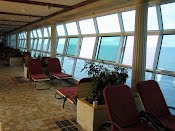 |
new_tit_ship_Funzug.com_05.jpg 112K Download |
 |
new_tit_ship_Funzug.com_11.jpg 119K Download |
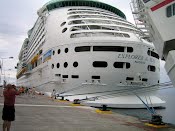 |
new_tit_ship_Funzug.com_14.jpg 111K Download |
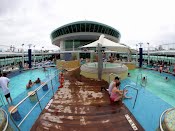 |
new_tit_ship_Funzug.com_08.jpg 103K Download |
 |
new_tit_ship_Funzug.com_15.jpg 129K Download |
 |
new_tit_ship_Funzug.com_04.jpg 154K Download |
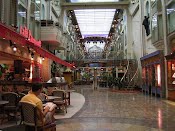 |
new_tit_ship_Funzug.com_06.jpg 141K Download |
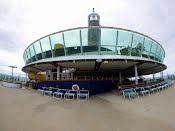 |
new_tit_ship_Funzug.com_12.jpg 70K Download |
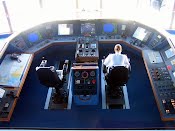 |
new_tit_ship_Funzug.com_16.jpg 94K Download |
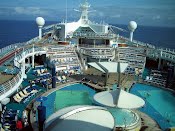 |
new_tit_ship_Funzug.com_01.jpg 150K Download |
 |
new_tit_ship_Funzug.com_10.jpg 56K Download |
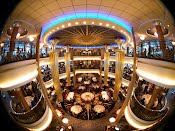 |
new_tit_ship_Funzug.com_13.jpg 152K Download |
 |
new_tit_ship_Funzug.com_07.jpg 90K Download |
 |
new_tit_ship_Funzug.com_09.jpg 93K Download |
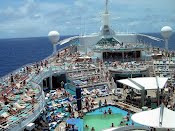 |
new_tit_ship_Funzug.com_02.jpg 169K Download |
 |
new_tit_ship_Funzug.com_03.jpg 140K Download |
groups.google.com/group/lifebang/browse_thread/thread/43562aa53abe89f
